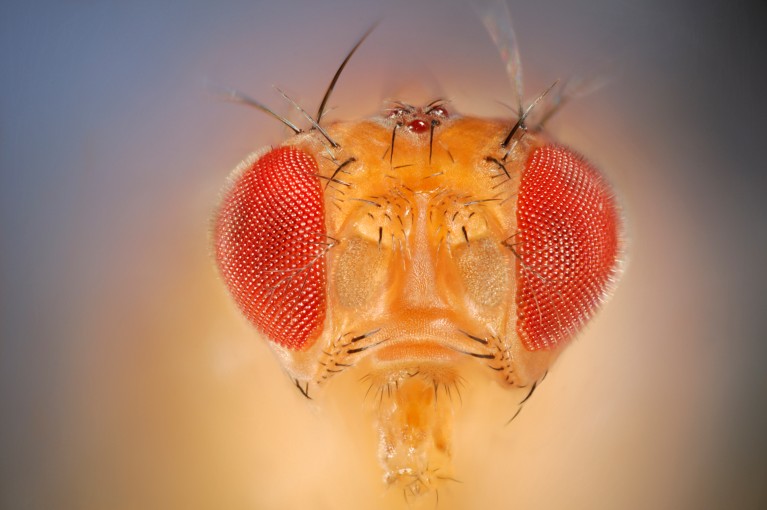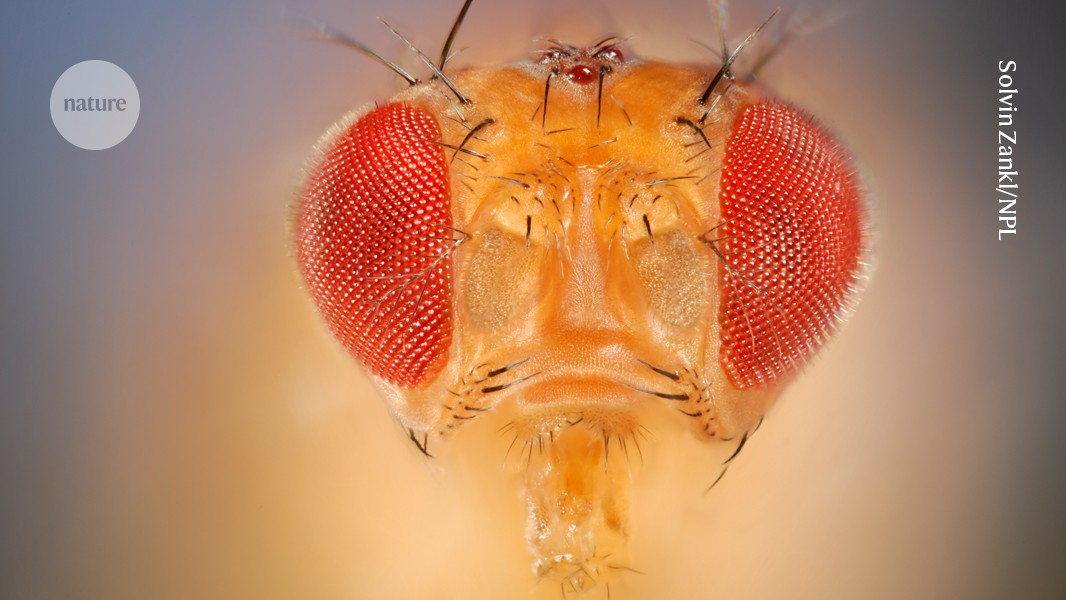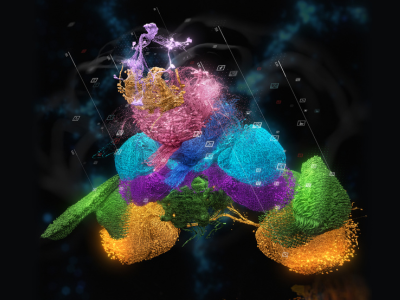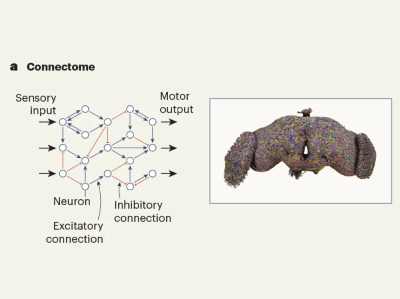
The fruit fly Drosophila melanogaster’s brain has been mapped in a project that discovered more than 4,500 new cell types.Credit: Solvin Zankl/Nature Picture Library
The brain of a fruit fly is so small that it can fit on the head of a pin. And yet, it is an inordinately complex object, encompassing nearly 140,000 neurons and 50 million synapses. It is no wonder, then, that it took 5 years, 50 laboratories and more than 200 people to map it — a monumental achievement that is the subject of a series of papers this week in Nature1–4.
Brain mapping is one of the most delicate and complex tasks in neuroscience, and even the smallest error can markedly affect the results. The achievement is all the more remarkable considering that around a dozen people working on the project were not full-time academic researchers, but volunteers from all walks of life, from around the world. They collaborated to validate results produced by artificial intelligence (AI). Hundreds of neuroscientists who study fruit flies also volunteered to support the project, and recruited their students. Together, they have been credited as authors. Amateur science is as old as science itself, but this project adds yet another way to involve more brain power in what is increasingly data-hungry research.
The FlyWire connectome: neuronal wiring diagram of a complete fly brain
The ‘FlyWire connectome’ map presented by Mala Murthy, a neuroscientist at Princeton University in New Jersey, and her colleagues1 is already helping to advance neuroscience. The project to create a ‘wiring diagram’ of connections between neurons discovered 4,581 cell types, many in understudied brain regions2. Other groups are using the map to study and make predictions about brain function. For example, researchers in the United States, the United Kingdom, South Korea and Puerto Rico have used it to investigate the neurons that control how flies feed and groom themselves3. The team simulated the relevant brain circuits and used the model to predict which neurons respond to food stimuli, such as sugar or water.
Another team, led by researchers at the University of California, Santa Barbara, used the map to predict how specialized neurons in certain parts of the fruit fly (Drosophila melanogaster) brain receive and process visual information4. The researchers used imaging techniques to confirm their predictions in female flies that were between seven and nine days old, underscoring the connectome’s power to understand how the brain works.
One of the main tasks of the researcher volunteers was to help the academic neuroscientists label the map and double-check its accuracy. Initially, the project’s scientists used electron microscopy to take images of slices of the fly brain. They then trained an AI model on these images to create a wiring diagram of millions of synapses and thousands of neurons. These predictions needed to be verified against quality criteria and parameters.
Fact-checking millions of data points is time-consuming. Instead, project co-leader Sebastian Seung, a neuroscientist at Princeton University, and his team built an interactive game-like platform called EyeWire, in which volunteers were asked to assemble 3D models of neurons in a mouse retina and zebrafish hindbrain. The 100 best-performing players were then trained to identify various types of cell and then set to work on the real project, to proofread the AI-generated synapses and neurons — a task that otherwise would have needed another 33 neuroscientists working full time, for at least a year, to complete.
“We thought [this study] would be many, many years in the making,” says Murthy. “But as the technology developed, and as we opened up the data, and the [volunteer] community really stepped in and were excited to participate with us, it became a reality. And we completed it, in what I would consider record time.”
A complete wiring diagram of the fruit-fly brain
John Ngai, director of the Brain Research through Advancing Innovative Neurotechnologies (BRAIN) Initiative at the US National Institutes of Health in Bethesda, Maryland, which funded the studies, told Nature that such an approach could be used for larger connectome projects that the BRAIN Initiative is funding. This includes a programme called BRAIN CONNECTS, which involves training people in the research and technical skills required to generate wiring diagrams of mammalian brains.
Amateur scientists and volunteers are getting increasingly involved in other areas, too. Earlier this month, researchers at the United Nations Statistics Division in New York City and Open Data Watch, a non-profit organization based in Washington DC, described how citizen scientists are helping to fill in data gaps for the UN Sustainable Develop-ment Goals, especially for marginalized communities5.
Last year, a study6 in Nature described how the asteroid Dimorphos became temporarily brighter and redder when NASA’s Double Asteroid Redirection Test spacecraft deliberately hit it. The finding was confirmed by a small group of amateur astronomers who were able to share their observational data with professional scientists through an app.
Often, it’s the professionals who need to check the work of the amateurs. What’s different about the fly-brain work is that the volunteers are helping the full-time scientists to authenticate their findings — something that could have a much wider application in our data-rich world.




